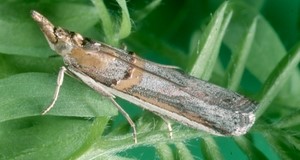


To use the model:
Temperature data for the selected location are extracted from gridded data at 0.5o (approx. 5km x 5km) resolution from the Australian Bureau of Meteorology.
An information manual for management of Etiella Moth in crops is available in PDF form. Click the thumbnail below to view and download.
The SARDI Etiella model was developed by Chris Krawec and Greg Baker (SARDI Entomology), with funding from the Grains Research and Development Corporation (GRDC).
The Etiella app was developed by Dr Kym Perry (SARDI), Sam Rogers (University of Adelaide) and Russell Edson (University of Adelaide), with funding from the South Australian Grains Industry Trust (SAGIT).
Please send all queries and feedback to kym.perry@sa.gov.au.
